Things You'll Need
500 ml/16.9-ounce plastic bottle
Balloon
2 spoons
2 tablespoons vinegar
1 teaspoon baking soda
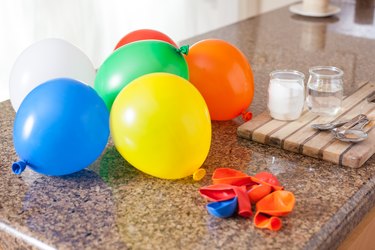
Baking soda and vinegar are both innocuous chemicals that most people keep around the house for cleaning and cooking purposes, but when you mix them together, the results can be exciting. Baking soda is sodium bicarbonate, and when it mixes with the acetic acid in vinegar, the reaction produces carbon dioxide. You can conduct a simple and fun experiment that demonstrates this reaction in a dramatic way by using a balloon and a plastic bottle. If you want, you can even create your own balloon-blowing factory.
Step 1
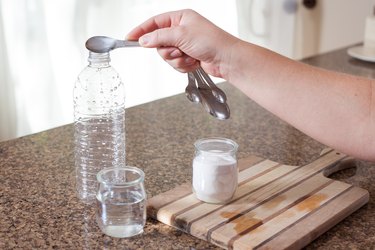
Remove the lid from an empty, clean 500ml/16.9-ounce plastic bottle and set it on a flat surface. Spoon two tablespoons of vinegar into the bottle.
Video of the Day
Step 2
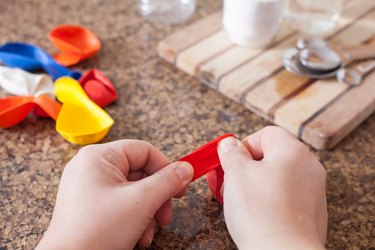
Open the mouth of a latex rubber party balloon by placing your fingers inside the balloon and stretching it open.
Step 3

Instruct a friend to spoon one teaspoon of baking soda into the balloon. Do not use the same spoon that you used for the vinegar.
Step 4

Stretch the mouth of the balloon over the mouth of the bottle and attach it. Try not to spill any of the baking soda while you're doing this.
Step 5
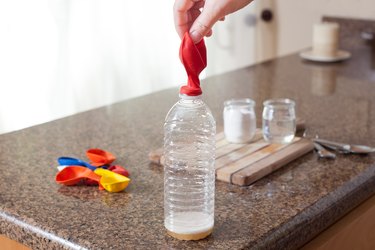
Hold the balloon upright and shake it to transfer all the baking soda from the ballon to the bottle. Let go of the balloon and watch what happens. The ballon will begin to expand as it fills with carbon dioxide from the reaction occurring inside the bottle.
Step 6
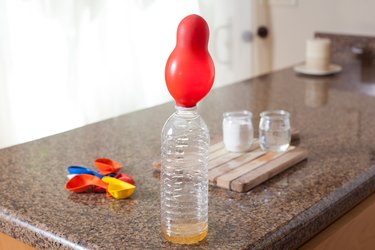
Allow the balloon to grow until it pops for a dramatic demonstration of the reaction. You can also remove the balloon before it pops, tie it off and quickly attach another one to the bottle. There should be enough carbon dioxide to fill that one, too. In fact, there may be enough gas to fill several balloons.
Tip
Write down your observations if you are doing this as a school science experiment.
If doing this as a group activity, separate children into groups of two to four. Pre-measure the baking soda and vinegar into two small plastic cups per group. You can purchase small containers called ramekins at a school supply or craft store. These have lids to prevent spillage.
If the balloon does not blow up immediately, shake the bottle a little to get the baking soda and vinegar to mix.
If using anything larger than a 16.9 oz plastic bottle, you'll need more baking soda and vinegar. You should also use more if you want to blow up several balloons instead of just one.
Warning
If you are working with smaller children or ones that scare easily, warn them before the balloon pops.
Video of the Day